Tomb of Rachel
Tomb of Rachel, Bethlehem
Judea and Samaria aka West Bank
The death of Rachel, beloved wife of the patriarch Jacob, is remembered on the Jerusalem-Hebron road north of Bethlehem. The tomb, a small building with a white dome, is now hidden behind a long bunker-like structure with guard towers and barbed wire. The access road is hemmed in by high concrete walls.
The book of Genesis recounts that Jacob and his family were travelling from Bethel when Rachel was about to deliver her second child:
“When she was in her hard labour, the midwife said to her, ‘Do not be afraid; for now you will have another son’.” (Genesis 35:17) But Rachel died giving birth to Benjamin, and Jacob erected a pillar at her grave.
Over the years, the Tomb of Rachel has been a place of pilgrimage for Jews, especially women unable to give birth. A Jewish tradition says Rachel’s tears have special powers, inspiring those visiting her grave to ask her to cry and intercede with God.
The tomb with its dome and olive tree became a Jewish symbol, appearing in thousands of publications and on the covers of Jewish holy books.
Venerated by three faiths
There is disagreement over the actual place where Rachel was buried. Some maintain it was further north, near the present village of A-Ram.
Nevertheless, the site of the Tomb of Rachel on the edge of Bethlehem has beenvenerated for centuries by Jews, Muslims (who claim it as an Islamic site) and Christians.
All three faiths have had a hand in its construction. The earliest construction over the tomb, a square building with arches and a dome, was erected by the Crusaders. Previously the place seems to have been marked by a small pyramid.
Tomb has been fortified
The Ottoman Turks allowed only people of their own faith to enter the tomb after they expelled the Crusaders. But in 1841 Sir Moses Montefiore obtained the keys for the Jews and was given permission to restore the tomb.
The tomb has been the scene of fighting between Palestinian and Israeli forces and in 1997 the building was heavily fortified.
When Israel’s separation barrier was erected, its high concrete walls cut Rachel’s Tomb off from the rest of the West Bank.Access for visitors is available only from Jerusalem. Men and women have separate visiting areas.
The present tomb consists of a rock draped with velvet. Eleven stones on it represent Jacob’s 11 sons who were alive when Rachel died.
Other sites in the Bethlehem area:
Field of Ruth
Herodium
In Scripture:
The death of Rachel: Genesis 35:16-20, 48:7
Administered by: Israel Ministry of Religious Affairs
Tel.: 1888-2-2762435
Open: All day, every day, except for Shabbat and religious holidays, and from 10.30pm to 1.30am Sun-Thurs.
References
Gonen, Rivka: Biblical Holy Places: An illustrated guide (Collier Macmillan, 1987)
Freeman-Grenville, G. S. P.: The Holy Land: A Pilgrim’s Guide to Israel, Jordan and the Sinai (Continuum Publishing, 1996)
Inman, Nick, and McDonald, Ferdie (eds): Jerusalem & the Holy Land (Eyewitness Travel Guide, Dorling Kindersley, 2007)
Wareham, Norman, and Gill, Jill: Every Pilgrim’s Guide to the Holy Land (Canterbury Press, 1996)
External links
Kever Rachel Imeinu (Rachel’s Tomb Institute)
Rachel’s Tomb (The Committee for Rachel’s Tomb)
Rachel’s Tomb (Wikipedia)
Rachel's Tomb (Hebrew: Kever Rachel) is a Jewish sacred site located between Jerusalem and Bethlehem in the West Bank. It is also a significant historical and religious site for Muslims and Christians.






History of Tomb of Rachel
This site is believed to be the burial place of the biblical matriarch Rachel, wife of Jacob and mother of two of his twelve sons. She died giving birth to Benjamin and "Jacob set a pillar upon her grave" (Gen. 35:19).
For Jews, Rachel's Tomb is the third holiest site after the Temple Mount in Jerusalem and the Cave of the Patriarchs in Hebron. It has become an important place of Jewish pilgrimage, especially Jewish women unable to give birth.
Jewish tradition has it that Rachel weeps for her children and that when the Jews were taken into exile, she wept as they passed by her grave on the way to Babylon (Jeremiah 31:11-16).
The structure on the site, a cube topped by a dome, was built around 1620 by the Ottoman Turks. It was lengthened in 1860 by Sir Moses Montefiore.
In the 1990's, due to the deteriorating security situation, the original domed structure was fortified and enclosed inside a building with a hall from the entrance. Recently, the site has been surrounded by a barrier to separate it from Bethlehem.
What to See at Tomb of Rachel
The site consists of a rock with eleven stones upon it, one for each of the eleven sons of Jacob who were alive when Rachel died in childbirth. Over the centuries, the rock was covered by a dome supported by four arches. The large tomb is now covered by a velvet drape.
Today, the site is very close to the checkpoint from the Palestinian territories into Israel. The original tomb, a rectangular structure with a white dome, has been enclosed inside a fortress, complete with guard tower, soldiers and barbed wire.
Tombs of the Patriarchs, Hebron
Judea and Samaria aka West Bank
The Tombs of the Patriarchs in the West Bank city of Hebron is the burial place of three biblical couples —Abraham and Sarah, Isaac and Rebekah, and Jacob and Leah.
The second holiest site in Judaism (after the Western Wall in Jerusalem), it is also sacred to the other two Abrahamic faiths, Christianity and Islam.
It was the patriarch Abraham who bought the property when his wife Sarah died, around 2000 years before Christ was born. Genesis 23 tells how Abraham, then living nearby at Mamre, bought the land containing the Cave of Machpelah to use as a burial place. He paid Ephron the Hittite the full market price — 400 shekels of silver.
Today the site is the dominant feature of central Hebron, thanks to the fortress-like wall Herod the Great built around it in the same style of ashlar masonry that he used for the Temple Mount enclosure in Jerusalem.
Herod left the interior open to the sky. The ruins of a Byzantine church built inside the wall around 570 were converted by Muslims into a mosque in the 7th century, rebuilt as a church by the Crusaders in the 12th century, then reconverted into a mosque by the sultan Saladin later in the same century.
Most of the enclosure is now roofed. Inside, six cenotaphs covered with decorated tapestries represent the tombs of the patriarchs. The actual burial places of Abraham, Sarah, Isaac, Rebekah, Jacob and Leah are in the cave beneath, to which access is not permitted.
Scene of God’s covenant with Abraham
Set in the Judean Mountains about 30 kilometres south of Jerusalem, Hebron stands 930 metres above sea level, making it the highest city in Israel and the Palestinian Territories. It is also the largest city in the West Bank, with a population in 2007 of around 165,000 Palestinians and several hundred Jewish settlers, and is known for its glassware and pottery.
It was near Hebron that God made a covenant with Abraham, that he would be “the ancestor of a multitude of nations” (Genesis 17:4).
Abraham had pitched his tent “by the oaks of Mamre” (Genesis 13:18), 3 kilometres north of Hebron, at a site now in the possession of a small community of Russian Orthodox monks and nuns.
Here Abraham offered hospitality to three strangers, who told him his wife Sarah — then aged 90 — would have a son (Genesis 18:10-14).
When Moses led the Israelites out of Egypt, about 700 years after Abraham, the men he sent to spy out the land of Canaanreturned from the Hebron area with a cluster of grapes so heavy that two men carried it on a pole between them — an image that is now the logo of the Israel Ministry of Tourism.
Later, King David ruled Judah from Hebron for seven and a half years before moving his capital to Jerusalem.
Emulating Abraham’s hospitality, early Muslim rulers of Hebron provided free bread and lentils each day to pilgrims and the poor.
Complex is in three sections
Herod’s mighty wall around the Tombs of the Patriarchs avoids the appearance of heaviness by clever visual deceptions. Each course of stone blocks is set back about 1.5 centimetres on the one below it, and the upper margin is wider than the others.
The corners of the edifice — called Haram al-Khalil (Shrine of the Friend [of God]) in Arabic — are oriented to the four points of the compass.
Inside, amid a confusing mix of minarets, domes, arches, columns and corridors of various styles and periods, the complex is divided into three main sections, each with the cenotaphs of a patriarch and his wife.
The main entrance, to the Muslim area, is up a long flight of steps beside the northwest Herodian wall, then east through the Djaouliyeh mosque (added outside the wall in the 14th century) and right to enter the enclosure.
Straight ahead, in the centre of the complex, are octagonal rooms containing the cenotaph of Sarah and, further on, the cenotaph of Abraham. Each of these domed monuments has a richly embroidered cover, light green for Sarah and darker green for Abraham.
In a corner just past Abraham’s room, a shrine displays a stone said to bear a footprint left by Adam as he left the Garden of Eden.
A wide door between these two cenotaphs leads to the Great Mosque, containing the cenotaphs of Isaac (on the right) and Rebekah. The vaulted ceiling, supporting pillars, capitals and upper stained-glass windows are from the Crusader church.
Ahead, on the southeastern wall, a marble-and-mosaic mihrab (prayer niche) faces Mecca. Beside it on the right is an exquisitely carved minbar (pulpit) of walnut wood. It was made (without nails) in 1091 for a mosque in Ashkelon and brought to Hebron a century later by Saladin after he burned that city.
Next to the pulpit, a stone canopy covers the sealed entrance to steps descending to the burial Cave of Machpelah.
Directly across the room, another canopy stands over a decorative grate covering a narrow shaft to the cave. Written prayers may be dropped down the shaft.
Entry to the Jewish area is via an external square building on the southwestern wall. This building houses a Muslim cenotaph of Joseph, one of Jacob’s sons (though Jews and Christians believe he was buried near Nablus).
Inside are synagogues and the cenotaphs of Jacob and Leah, each in an octagonal room. (Jacob’s beloved second wife, Rachel, is remembered at the Tomb of Rachel, on the Jerusalem-Hebron road north ofBethlehem).
Site and city are divided
Friction between Jews and Muslims at Hebron dates back to a 1929 riot in which Arab Muslims sacked the Jewish quarter and massacred 67 of its community.
More recently, in 1994 a Jewish settler entered the Tombs of the Patriarchs during dawn prayers and shot 29 Muslim worshippers (the mihrab still bears bullet marks).
Since then, Jews and Muslims have been restricted to their own areas of this divided site, except that each faith has 10 special days a year on which its members may enter all parts of the building. Pilgrims and tourists may enter both areas.
The city of Hebron is also divided intotwo zones. The larger part is governed by the Palestinian Authority. The remainder, including the town centre and market area, is occupied by Jewish settlers and under Israeli military control.
In Scripture
Abram settles by the oaks of Mamre at Hebron: Genesis 13:18
God makes a covenant with Abram and changes his name: Genesis 17:3-5
Three strangers pay a visit to Abraham: Genesis 18:1-16
Abraham haggles with God over the future of Sodom: Genesis 18:17-33
Sarah dies and Abraham buys the Cave of Machpelah: Genesis 23:1-20
Abraham dies and is buried with Sarah: Genesis 25:7-10
Joshua attacks Hebron and kills its inhabitants: Joshua 10:36-37
David is anointed king over Judah at Hebron: 2 Samuel 2:1-4, 11
Administered by: Islamic Waqf Foundation
Tel.: 972-2-222 8213/51
Open: Usually 7.30-11.30am, 1-2.30pm, 3.30-5pm; Muslim area closed on Fridays, Jewish area closed on Saturdays. Passport checks apply and it is wise to check the security situation before visiting (the Christian Information Centre in Jerusalem suggests telephoning 02-2227992).
References
Beitzel, Barry J.: Biblica, The Bible Atlas: A Social and Historical Journey Through the Lands of the Bible (Global Book Publishing, 2007)
Brownrigg, Ronald: Come, See the Place: A Pilgrim Guide to the Holy Land (Hodder and Stoughton, 1985)
Chadwick, Jeffrey R.: “Discovering Hebron: the City of the Patriarchs Slowly Yields Its Secrets”, Biblical Archaeology Review, September/October 2005
Dyer, Charles H., and Hatteberg, Gregory A.: The New Christian Traveler’s Guide to the Holy Land (Moody, 2006)
Eber, Shirley, and O’Sullivan, Kevin: Israel and the Occupied Territories: The Rough Guide (Harrap-Columbus, 1989)
Freeman-Grenville, G. S. P.: The Holy Land: A Pilgrim’s Guide to Israel, Jordan and the Sinai (Continuum Publishing, 1996)
Gonen, Rivka: Biblical Holy Places: An illustrated guide (Collier Macmillan, 1987)
Inman, Nick, and McDonald, Ferdie (eds): Jerusalem & the Holy Land (Eyewitness Travel Guide, Dorling Kindersley, 2007)
Murphy-O’Connor, Jerome: The Holy Land: An Oxford Archaeological Guide from Earliest Times to 1700 (Oxford University Press, 2005)
Prag, Kay: Israel & the Palestinian Territories: Blue Guide (A. & C. Black, 2002)
Shahin, Mariam, and Azar, George: Palestine: A guide (Chastleton Travel, 2005)
External links
Hebron (Bible Encyclopedia)
Hebron (BiblePlaces)
The Cave of Machpelah (HolidayinIsrael)
Hebron (VisitPalestine)
Ma’arat HaMachpela (Jewish Community of Hebron)
Tombs of the Patriarchs, Hebron (Sacred Destinations)
Safed History - The City of Kabbalah
Welcome to the web-site of the ancient city of Safed (also spelled Safed, Zefat, Tsfat, Zfat, Safad, Safes, Safet, Tzfat, etc.). A rather small town located in Northern Israel, 900 meters (3200 feet) above sea level in the mountains of the Upper Galilee, it commands magnificent views east to the Golan, north to the Hermon and Lebanon, west to Mt. Meron and the Amud Valley, and south to Tiberias and the Kinneret (Sea of Galilee).
For a long time Safed has been a well kept secret, even to most Israelis. However, according to the great mystics of the past, Safed is to play an important role in the final redemption. The Meam Loez, in the name of Rabbi Shimon bar Yochai, says that the Messiah will come from Safed on his way to Jerusalem. The Ari HaKodesh said that until the Third Temple is built, the Shechinah (God's Manifest Presence) rests above Safed.
Its past is also rich and great. According to legend, Safed is where Shem and Ever, son and grandson of Noah, established their yeshiva where Jacob (Yaakov Avinu) studied for many years. According to other sources, the town was founded in 70AD. The city flourished in the 16th century, when many famous Jewish religious scholars and mystics moved to Safed following the Spanish Expulsion,, fleeing from the horrors of the Inquisition. Safed then became the spiritual center of the Jewish world, where Kabbalah (Jewish mysticism) reached the peak of its influence. Kabbalists, such as Rabbi Yitzhak Luria (Ha-Ari HaKadosh) and Rabbi Shlomo Alkabetz (author of Lecha Dodi) and Rabbi Yosef Karo (author of the Shulchan Aruch) just to name a few, made the city famous. It was here that the first printing press in the Middle East was set up, publishing in 1578 the first Hebrew book to be printed in Israel. At that time the town was also a thriving trade center.. However, Safed suffered terribly during the ensuing years due to earthquakes, plagues and Arab attacks. In modern times, the liberation of Safed was one of the most dramatic episodes in the 1948 War of Independence.
Safed is one of the four holy cities in Israel, together with Jerusalem, Hebron and Tiberias. The old part of town consists of narrow cobblestone alleys revealing artists' galleries, medieval synagogues, private homes and small guest houses. Despite its small population (ca 27,000), Safed is once again making its mark on the map.
Thousands of Russian and Ethiopian immigrants have made Safed their home in the past decade. There is also a small but vibrant community of Baalei Tshuva. By definition, these are people who made the effort to connect to their Jewish soul and heritage and Safed is definitely a town with a Jewish soul. The conditions in Safed are ideal for immersion in Torah study. Excellent Torah classes are available for whoever seeks to learn, in either Hebrew or English, especially for those new to the path of yiddishkeit. There are very few distractions, and relations between religious and secular residents are good . The famous mountain air is conducive to clear thinking and excellent meditation. The nearby forest and nature reserve provide the seclusion and serenity needed for powerful communion with God. Many Tzaddikim (righteous holy people) are buried around here. Afterall, as our sages are quick to point out, a Tzaddik never dies. These graves tend to be located in some of the most scenic locations in the Land of Israel and most are easily accessible by foot or car. Many have been transformed into houses of prayer. For the more adventurous, a number of famous gravesites are found as one explores our nature reserve anywhere in the north. For example, just a half hour's walk from Safed's Old City, depending on the time of year and amount of rainfall, you can encounter a virtual paradise, resplendent with fruit trees, waterpools and olive groves.
Despite its natural beauty and charm, to truly appreciate Safed requires an intimate, holy and Jewish connection, which requires work. Like a beautiful yet modest woman, her real charm is hidden and only made available to the special few who merit her attention. Yet it is this modesty, humility and sense of purpose that makes Safed special.
Safed is the balance where the spiritual meets the physical, where the East meets the West, where Hashem guides you along the path but your efforts allow you to merit the reward. Everyone is invited to experience and appreciate the challenge.
Safed History - The City of Kabbalah
The history of the city of Safed dates back more than 2,000 years. This was a city occupied during the time when the 2nd Temple of Jerusalem stood, and it is a city that has been continuously occupied by various people and communities throughout the centuries. Check out our articles on the history of Safed and find out more about this interesting and historic city.
The City of Kabbalah
Safed has always been an important city for the Jewish people and is considered the most mystical city in all of Israel. It is also known throughout the world as the city of Kabbalah. Discover why Safed was bestowed this important honor and learn more about the connection between Safed and the Kabbalah and learn more about the many well-known Rabbis of Safed from the centuries past like Rabbi Karo, Rabbi Cordovero, Rabbi Vital, Rabbi Beirav, and Rabbi Luria and hear about the city's historical synagogues. Also get to known one of the most famous Kabbalists, The Ari. Even more important for your preparation for a visit to Safed is to become informed about the Kabbalah, what it is, when it was created, and what religious importance it holds. You have probably heard a lot of hype in the media over the past few years as Kabbalah study has become popular among Hollywood A-listers like Madonna, Demi Moore, and even Britney Spears. However, did you know that the origins of the Kabbalah and Kabbalah study come from Safed? Satisfy your curiosity and start reading now!
And There Were Wars
Safed has known its fair share of wars. At the top of the mountain upon which the city is situated you will notice the ruins of a once mighty fortress, known as the Citadel. This fortress was built by the Crusader presence during their conquest of the holy land. Check out our articles on the Crusaders and learn more about why they were here and about how they were expelled from the land. Also find out about the golden period of Safed underOttoman Rule, 16th century Safed, ancient Safed in Biblical and Roman times, the riots of 1929, the 1974 Massacre, and Safed in the 1930s. Get the real history of Safed from the Abbos family.
During the 1948 War of Independence, Safed was the site of major battle between the small Jewish community of the city and its Arab neighbors. Read stories about the heroic battle for the survival of the Jewish Quarter of Safed and discover how, although outnumbered, the Jews of Safed managed to hold onto their place in the city. Also read about the Rabbi of Safed in 1948, Rabbi Heller and find out how he contributed to thevictory of Safed.
More recently during the 2nd Lebanon War in 2006, Safed again found itself under attack. Hear the horrifying tales of how rocket after rocket landed on the homes and streets of Safed and hear more devastation of the city during this time.
A Time To Celebrate
Safed is also a city where you can really get the feel for the many Jewish and Israel holidays that come during the year. Find out how this city celebrates by reading out articles on Safed and Passover, after Passover, Sukkot, Purim, Hanukkah, Rosh Hashana, Sukkot,Shavout and Independence Day.
Also check out our navigation list for much, much more!
Safed has played a major role in the history of the Jewish religion and its spiritual essence. The city has seen great heights as well as tremendous difficulties. Today the small mountaintop town is, once again, a center of Jewish spirituality where visitors can explore the synagogues and historical sites of the town. A large and vibrant Artists Colony was established and some of Israel's best known artists and artisans make their homes in the city's expanding Artist Quarter. Opportunities for tourists have also expanded as travelers come to Safed to discover how the history, culture and spirituality of the city has impacted on the Jewish world.
It's possible to come to visit at any time but Shabbats and holidays are especially enjoyable occasions in which the town's synagogues and residents welcome visitors to join them in celebration. The yearly Klezmer Festival is also a popular time of year in which thousands of people come from throughout the world to enjoy the fun and excitement that the festival brings to the entire region.
There are a wide variety of amenities available to accommodate tourists of any budget or interest including accommodations, tours and opportunities for study and experience. There's even a Tzfat Treasure Hunt! There is also a range of popular knickknacks and clothing lines which enable people to enjoy the atmosphere of Safed wherever they may be.
14 Top-Rated Tourist Attractions in the Sea of Galilee Region
Forever entwined with the story of Jesus Christ, who carried out much of his ministry work in the area, the Sea of Galilee region is a beautiful place full of ancient archaeological remnants and drop-dead gorgeous scenery. For Christians, of course, the main highlights are the collection of churches around Tabgha, built over the sites where Jesus carried out his miracles, but for other visitors, the placid lakeside scenery, hot pools, and hiking options in the surrounding hills provide enough of a reason to visit.
1 Tiberias
Sitting on the edge of the Sea of Galilee, Tiberias is the perfect base to explore this region. The waterside street Yigal Allon Promenade is home to most of the town's tourist attractions and is a great place for a lakeside stroll. Along this road you'll find the 19th-century Church of St. Peter, built over the remains of a Crusader castle. There's a beautiful cloister inside, and the apse of the church is projected like the bow of a ship - a reference to Peter's fishing boat. Just around the corner on HaYarden Street is the sculpture park known as the Open-Air Museum. If you walk south along the promenade, you come to the Greek Orthodox Monastery, erected in 1862. If you head inland from the sea, Tiberias is home to a number of important Jewish tombs. About 300 m from the northern end of HaGalil Street is the tomb of the great philosopher and physician Maimonides (Rabbi Mose Ben Maimon, also known as Rambam). Born in Cordoba in 1135, Maimonides left Spain because of religious persecution and went toCairo to become Saladin's personal physician. While there, he also became the spiritual leader of the Jews in Egypt. As well as the tomb there is an excellent museum here dedicated to his life and work. The tomb of Yohanan Ben Zakkai - who, after the destruction of Jerusalem in AD 70, founded a Jewish school in Yavne and transferred the seat of the Sanhedrin to that town - is also near here.
2 Tiberias-Hammat (hot springs)
Tiberias has been famed as a spa center since the Roman period, and its hot springs are as popular now as they were then. After you've finished having a soak, catch up on some history by visiting the fourth-century synagogue next door with its well-preserved, richly-patterned mosaic floor. The mosaic betrays the influence of Hellenistic and Roman culture even on pious Jews during this period with the central portion depicting the sun god Helios surrounded by the signs of the zodiac.
Location: 2.5 km from Tiberias town
3 Bet Yerah
The archaeological site of Bet Yarah ('house of the moon', also known as Khirbet Kerak) is not mentioned in either Biblical or Egyptian records, but excavations here have uncovered evidence of a settlement dating from the Bronze Age right through to the period of Arab rule. There are well-preserved remains of fourth- and fifth-century AD baths, and also the remains of a Roman fort from the third century AD. There is also a fifth-century three-aisled synagogue and a Byzantine church.
Location: 10 km south of Hammat hot springs
4 Arbel National Park
Arbel National Park is a wonderful place to put your hiking shoes on and hit the trail. The major attraction here is the walk up to the Horns of Hittim- the scene of a decisive battle during the Crusader period. On July 4th, 1187, Saladin inflicted an annihilating defeat on the Crusaders here. The Latin kingdom founded 88 years before now lost its capital, Jerusalem, and much of its territory; and for the remaining 104 years of its existence it was confined to a narrow coastal strip with its capital at Acre (Akko). It is a half-hour walk to the top of the hill on a footpath running up from the main road. From the summit, on which there are Bronze Age remains, there are fine views of Eastern Galilee and the Sea of Galilee.
Location: 10 km west of Tiberias
5 Kibbutz Ginosar
The principal attraction of this little kibbutz is the ancient fishing boatdisplayed here. Discovered in 1986, buried in mud near the edge of the lake, the boat has been dated to between 70 BC and AD 90, meaning that it could have been in use during the time of Jesus.
6 Church of the Multiplication of Loaves and Fishes
The Church of the Multiplication of Loaves and Fishes is built over the site where tradition states Christ stood during the miracle when he fed the 5,000. Built in 1982, designed by the Cologne architects Anton Goergen and Fritz Baumann, it stands over the site of an earlier Byzantine-era church and has preserved original elements of the older church within the interior. The Byzantine period mosaics on the flooring are the church's most distinctive feature depicting a variety of birds and floral designs. The most interesting mosaics are in the transepts. The artist was evidently familiar with the Nile Delta and has depicted the flora and fauna of that region with flamingos, snakes, herons, ducks, lotus flowers, and reeds. The south transept also shows a Nilometer (a device used for measuring the level of the river). The altar in the sanctuary is built over the stone on which Christ is said to have stood when the miracle was performed. In front is the church's most famous mosaic depicting a basket containing loaves and flanked by two fish.
Location: Tabgha
7 Church of the Primacy of St. Peter
Just 200m farther along the road to Capernaum from the Church of the Multiplication of the Loaves and Fishes, a footpath runs down to the shores of the Sea of Galilee and the Church of the Primacy of St Peter. A chapel built here in the 4th century was destroyed in 1263 and the black basalt present-day church was built by the Franciscans in 1933. The church commemorates the appearance of the risen Christ to his disciples on the shores of the lake when he gave Peter primacy over the church. The rock at the east end of the church is supposed to be the table at which Christ dined with his disciples. On the south side of the church there are rock-cut steps leading down to the lake which were described by the pilgrim Aetheria in about AD 400 as "the steps on which the lord stood".
8 Mount of Beatitudes
Tradition states that it was here that Jesus delivered his famous Sermon on the Mount. The Roman Catholic Church here (built in the 1930s) holds mass hourly between 8am and 3pm for the pilgrims who travel here. The immaculately kept gardens are a wonderfully tranquil spot to take in the views over the Sea of Galilee, while inside the church itself, there is a lovely stained glass window depicting the Beatitudes.
Location: Tabgha
9 Capernaum
This archaeological site is believed to be the Capernaum of the New Testament where Jesus lived, preached, and gathered the first of his disciples. The beautiful remains of a fourth-century synagogue are the most prominent ruins here, while the modern church on the site is built over the remnants of a Byzantine church and the ruins of the House of St. Peter.
Location: 3 km from Tabgha
10 Greek Orthodox Church of the Twelve Apostles
Well worth a visit, this beautiful red-domed church is a major landmark along the Sea of Galilee. It was built in 1925 by the Greek Orthodox Church and has an interior of beautiful icons. The garden here is a shady spot to escape the heat of the midday sun.
11 Bethsaida
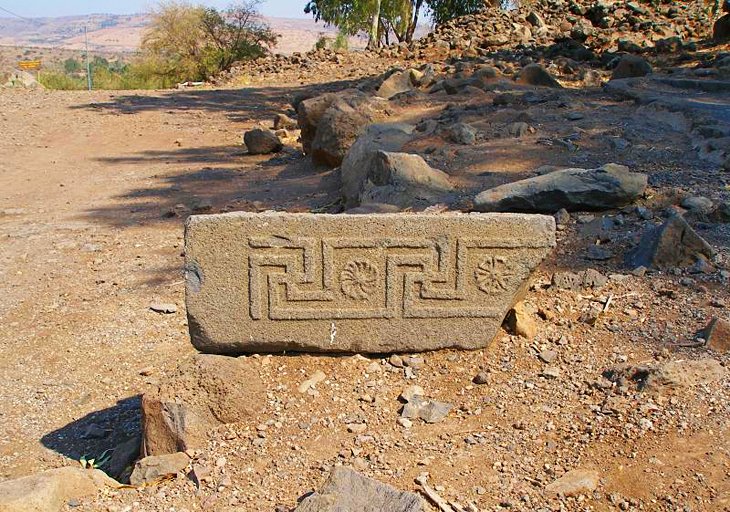
These basalt ruins are believed to be the remnants of the New Testament town of Bethsaida where Jesus performed the miracle of walking on water. As the ruins are mostly only foundations, information boards at strategic points help you interpret the site.
12 Korazim
These atmospheric basalt ruins are the remains of another town from the time of Jesus. The main highlight of a visit here is the synagogue, which is home to beautiful carvings with Hellenistic influences on the stones.
13 Yardenit
Near the headwaters of the Jordan River, Yardenit is a popular baptism spot for pilgrims looking to dunk themselves in the famous waters of the Jordan. There are wooden platforms built along the river bank to aid visitors who want to immerse themselves.
14 Deganya
The kibbutz of Deganya lies at the point where the Jordan River emerges from the Sea of Galilee. This was the very first kibbutz, founded in 1909 by Russian immigrants, with the original kibbutz now known as Deganya A, and its more recently-founded neighbour as Deganya B. At the main entrance to Deganya A, is a Syrian tank, which in 1948, advanced as far as the kibbutz, but was then knocked out by a Molotov cocktail. Within the territory of the kibbutz is Gordon House (named after Aharon D. Gordon, one of the founders of the kibbutz), a research institute with an archaeological, natural history, and agricultural museum.
Location: 2 km south of Bet Yerah
History
When the Israelites took possession of the Promised Land, the tribes of Naphtali, Zebulun, and Asher settled in Galilee (Joshua 19), where they were later joined by the tribe of Dan (Judges 18). In the eighth century BC, the country was occupied by the Assyrians; later came Babylonians, Persians, and Greeks.
After the Hasmonean conquest in 163 BC, non-Jews lived in the coastal plain and Jews in the upland regions. When the Romans occupied Galilee, it was ruled, along with Judaea, by the Hasmonean ruler Hyrcanus II and then by Herod the Great. Thereafter, in the lifetime of Jesus, it belonged to the tetrarchy of Herod Antipas, who made Tiberias his capital, and then, until 44, to the kingdom of Herod Agrippa. In AD 66, Galilee was a stronghold of the Jewish uprising against the Romans, and after the Bar Kochba rising (AD 135) it replaced Judaea as the center of Jewry, the towns of Bet Shearim, Sepphoris (Zippori), and Tiberias being of particular importance in this connection.
From the seventh century onwards, the Arab population of Galilee increased steadily. The first Jewish settlements of modern times were established at Rosh Pinna (1878) and Metulla, the most northerly village in Israel (1886). In 1948, Galilee became part of the newly founded state of Israel.





























































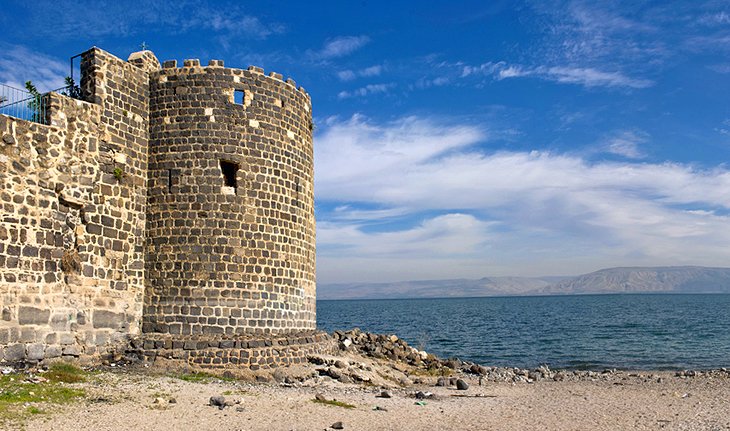
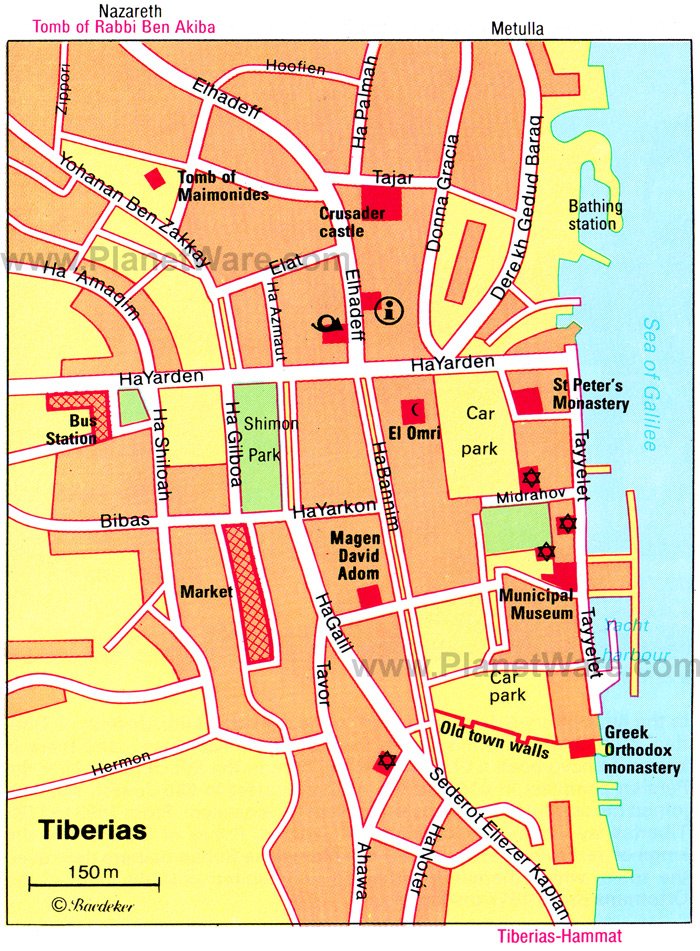
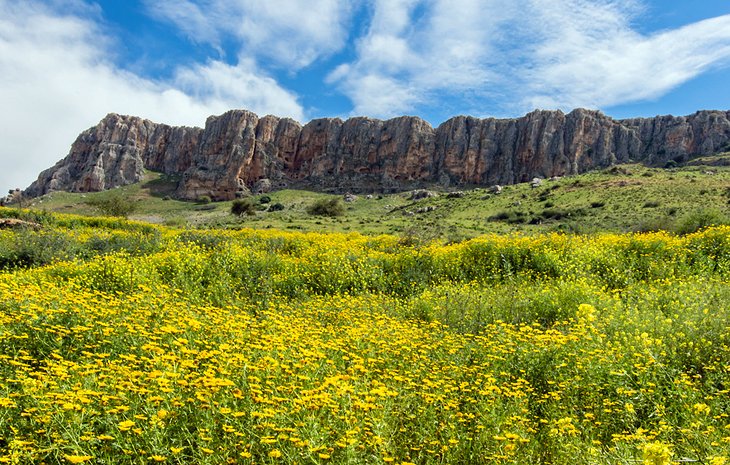
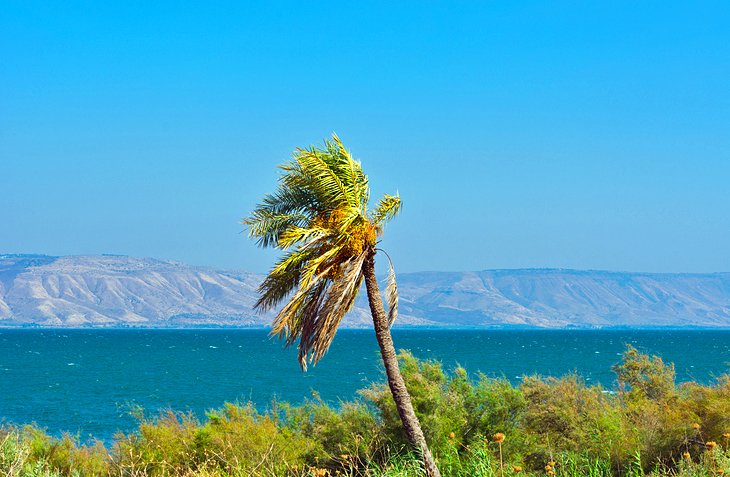
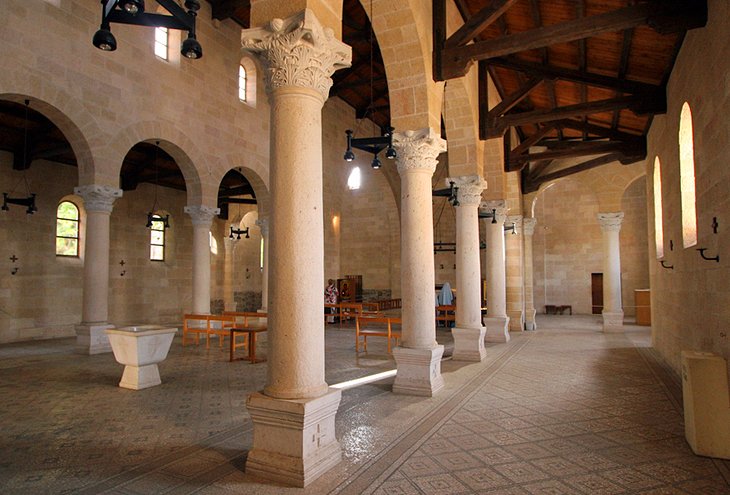
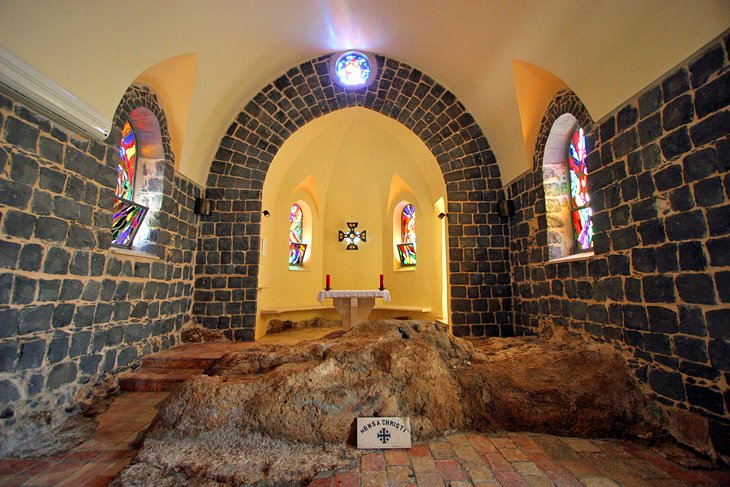
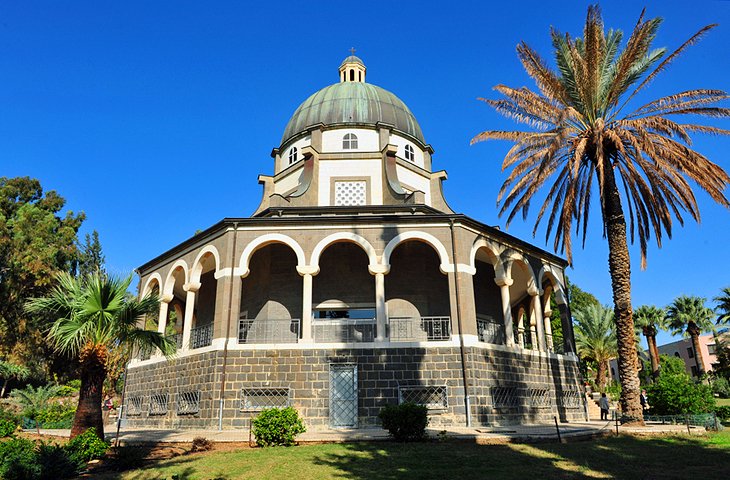
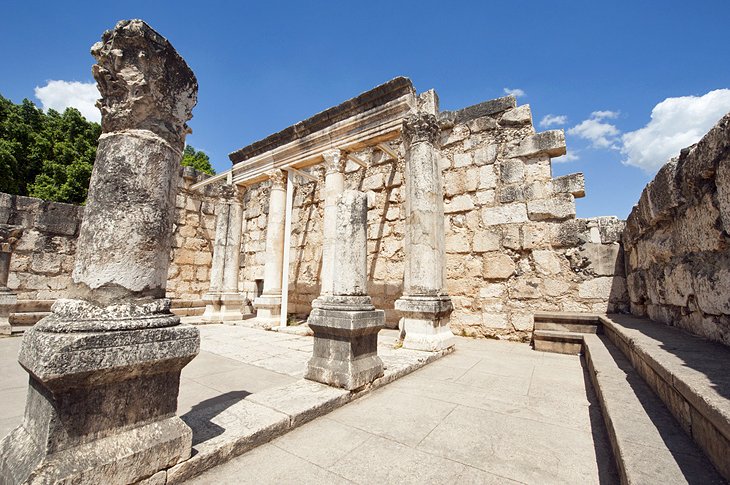
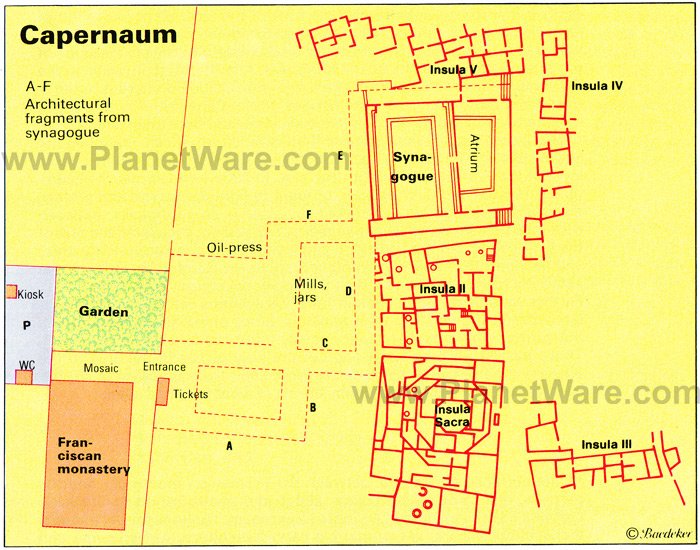
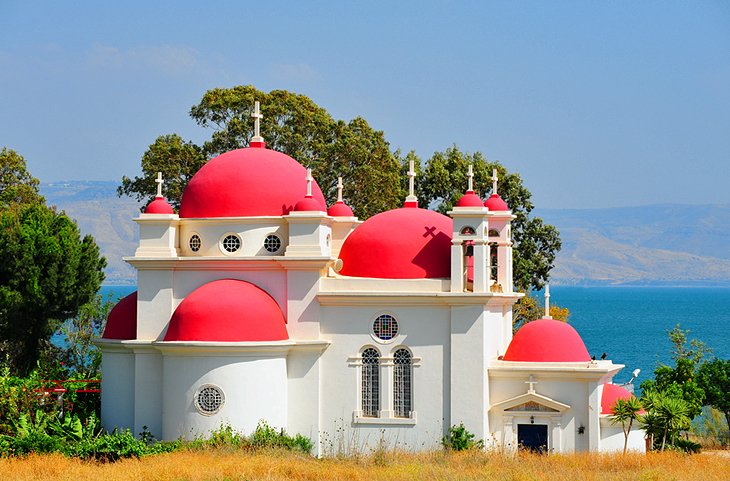
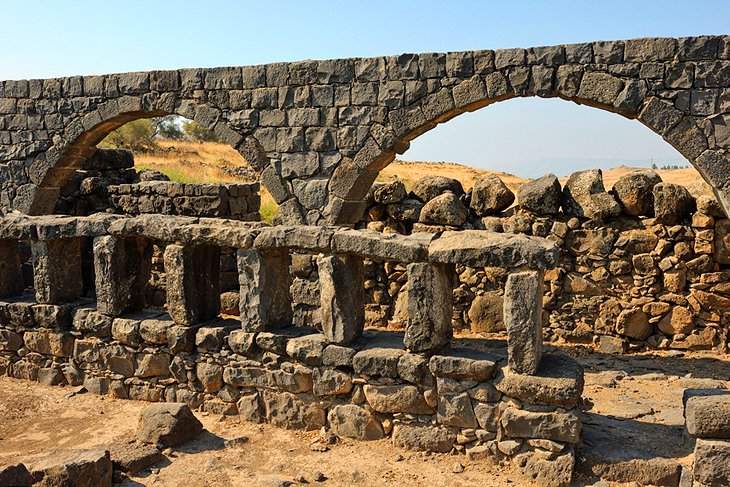
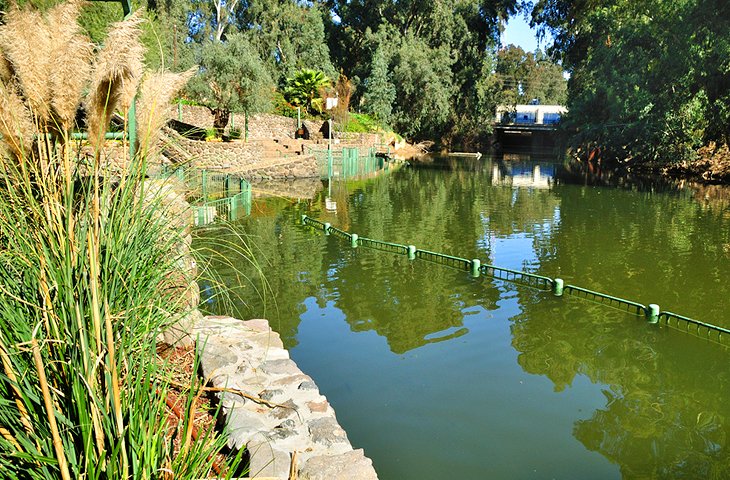
No comments:
Post a Comment